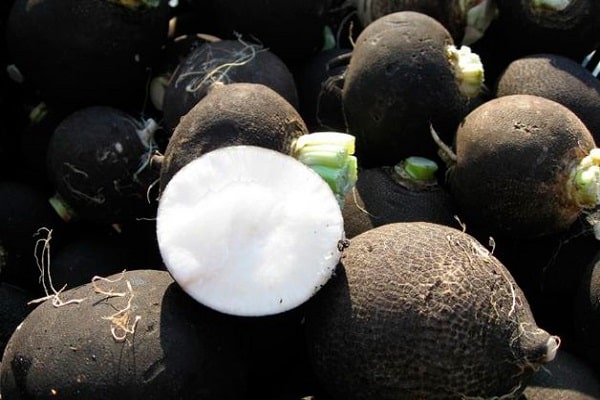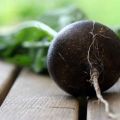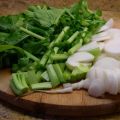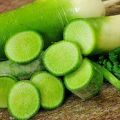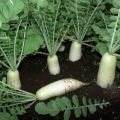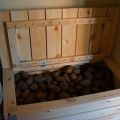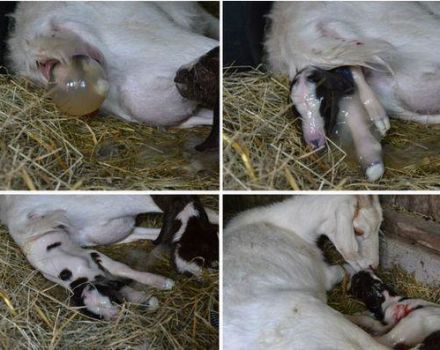When you need to remove radish from the garden for storage for the winter
Growing a crop is half the battle, you still need to save it in order to enjoy the fruits of labor from autumn to spring. If you remove the radish from the garden on time, then the root crop will last until the next harvest and remain strong and juicy. Fresh fruits make up for the lack of vitamins, fiber, potassium during the winter, when the immune system is especially weakened.
When to remove black, white, red radish
Sweet radish with white and red skin is grown for consumption in summer or autumn. Its delicate pulp does not withstand long-term storage. Even late varieties can remain juicy for only 2 months. Therefore, the white and pink daikon fruits are harvested throughout the summer, and are eaten fresh. If the root crop is overexposed in the ground, then voids will form inside it, and the pulp will become tough and tasteless.
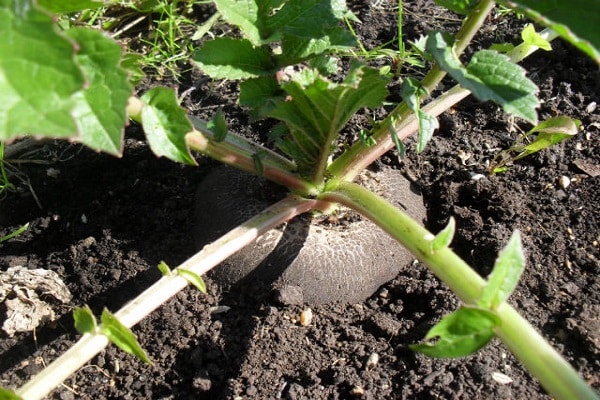
Later varieties of white radish are left until September-October. In areas where frosts start early, you need to have time to dig it out before the cold snap.
Determine the degree of maturity of the radish by the large size of the root crop, drying of the tops.
The black vegetable product is planted in June-July, so it reaches technical maturity in mid-late autumn. Dig it up before the first frost.
It is necessary to harvest any kind of radish on time. Harvested ahead of time, the crop will wither and germinate faster. There is little benefit from such a product.
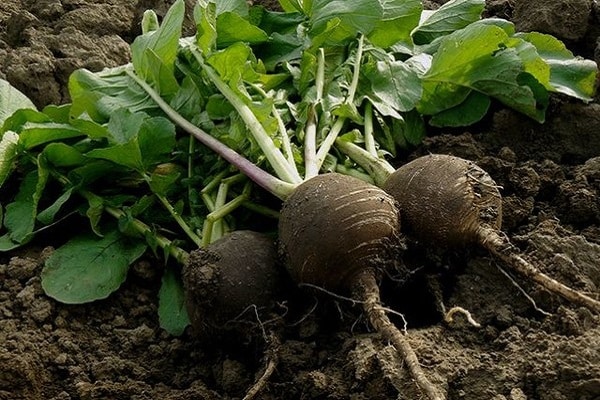
Summer harvest
For the use of root crops in the summer, early ripening varieties are chosen, which are planted in open ground or under film shelters in April - early May. After 1.5-2 months, the fruits will reach technical ripeness and can be dug out.
It is not necessary to harvest the crop immediately, but gradually pulling the radish out of the ground. They start with large root crops that have already become juicy and tasty. After two weeks, the rest are collected. If they lie in the ground, they will become hollow, with dry flesh.
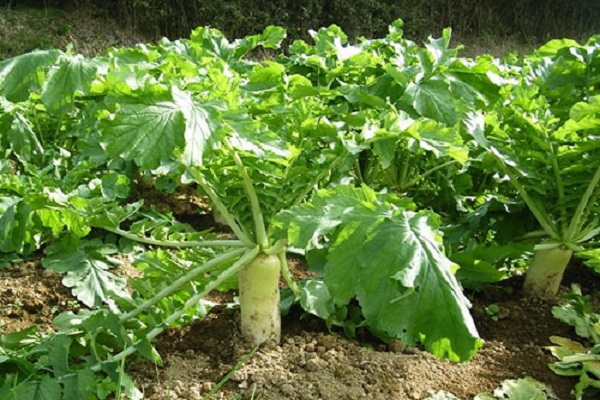
The specific harvesting time is determined based on the sowing time and vegetable variety. To make sure that the root crop is ready for use, you need to take 2-3 copies from the garden, taste it. Fruit condition monitoring is carried out regularly, then the harvest will be harvested on time.
Harvesting autumn varieties
Mid-season radish is a short-day vegetable. She doesn't need a lot of sun. Therefore, you should not plant the seeds early, otherwise the formation of the root crop will occur on hot days. From this, growth stops, and the vegetable releases arrows with flowers. The correct selection of the plant variety is important. Growing too long in areas with early frosts will result in crop loss.Early ripening varieties are also suitable for autumn, which can be dug by September if they are planted in July.

Harvesting winter varieties
For winter storage, black radish is usually left, less often daikon or green. It is harvested depending on the region of cultivation. In the middle lane, in the Urals, in Siberia, the last harvesting date is mid-October. If regular temperature drops have begun, then you need to do this earlier. Although the vegetable is not afraid of frost, after freezing, the fruit will lose some of its valuable properties.
They always dig up the root crop not immediately, but selectively. They extract crops from the ground by pulling them out with their hands or digging them in with a shovel, pitchfork.
For harvesting, you need to choose a fine day in order to leave the fruits in the garden to dry out. Carefully dig out the product without damaging it. After cleansing from the ground, remove the tops, leaving a stump of 1.5-2 centimeters in size. During the cutting of the stem, it is necessary not to damage the skin, otherwise pathogenic microorganisms will get through the wound and destroy the product.
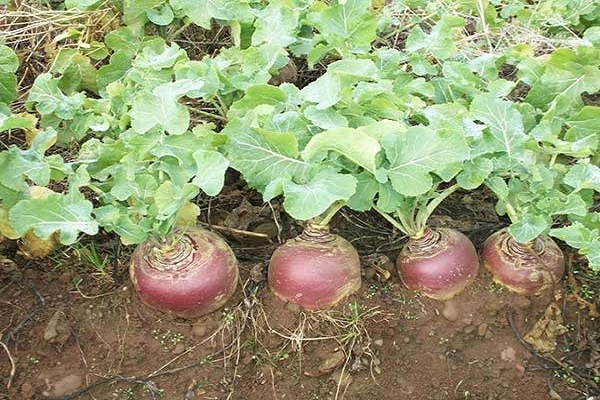
Storage preparation
Timely harvested root vegetables must be prepared for storage:
- They start by sorting out the harvest, laying aside small and slightly damaged radish.
- For the final drying, the collected product is laid out in a room where it is well ventilated and not exposed to sunlight.
Cellars or cellars also need preparation for storing fresh vegetables:
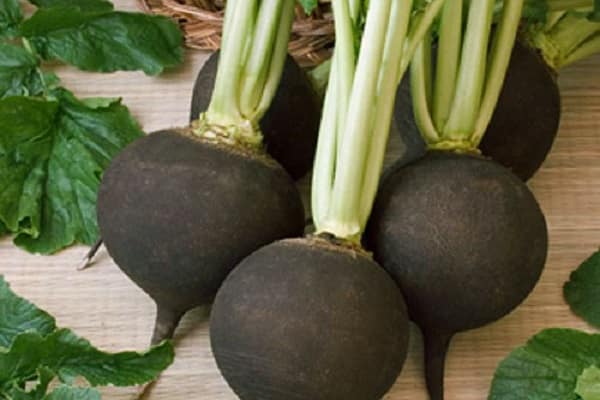
- To do this, they clean the premises of debris, disinfect wooden surfaces with special solutions, whitewash with copper sulfate diluted with lime in a ratio of 1:20.
- It is necessary to thoroughly dry the basement before laying the root crop.
- Do not forget about sealing gaps that can become a passage for rodents.
All work should be completed 2 weeks before the planting of the radish harvest.
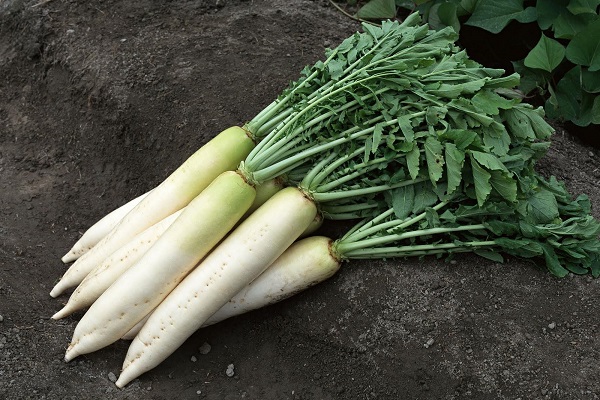
Storage in the autumn-winter period
Before placing the harvested roots in storage, they are sorted again. Small vegetables with a diameter of 3-4 centimeters are best left for consumption and put in the refrigerator. The rest of the crop is laid down with a stump, sprinkling each row with sand.
With a small amount of radish, you can put it in dry wooden boxes, pouring wet sand, or in polyethylene bags. Do not close containers, the product must breathe. The optimal storage temperature is 2-3 degrees Celsius with a humidity of 85%. The beet placed next to it protects the radish well.
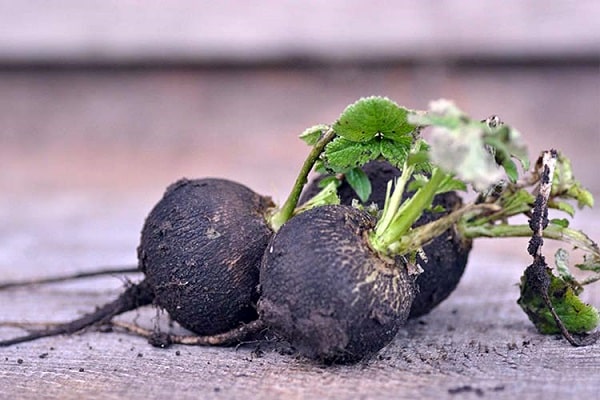
Throughout the winter, you need to regularly monitor the vegetable, selecting damaged, rotten fruits. The radish that begins to wilt is urgently removed, trying to use it first.
Make sure that the fruits do not freeze. To do this, the lids of the cellars are insulated, closing them in severe frosts with layers of burlap. If the root vegetable freezes, it will become unfit for human consumption.
